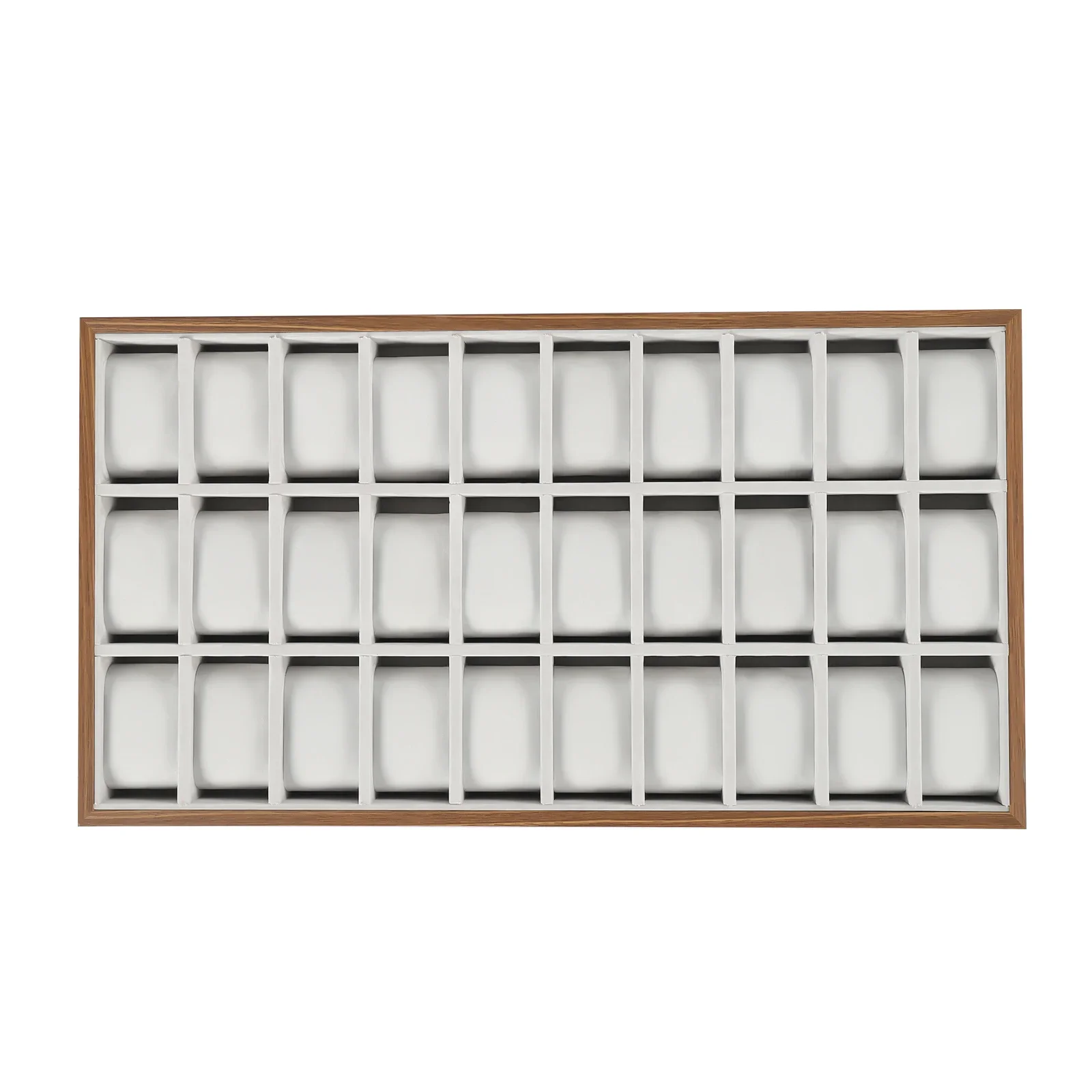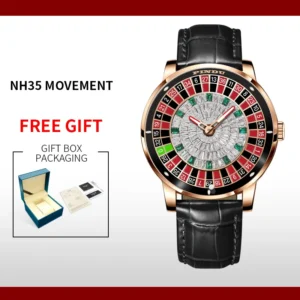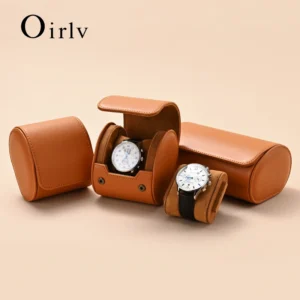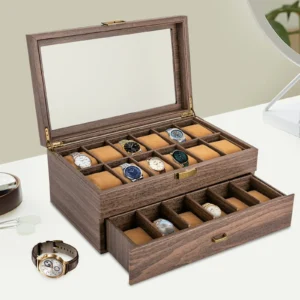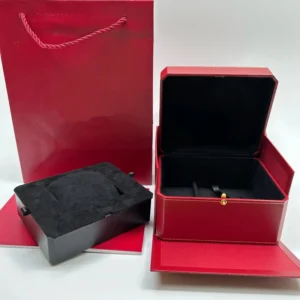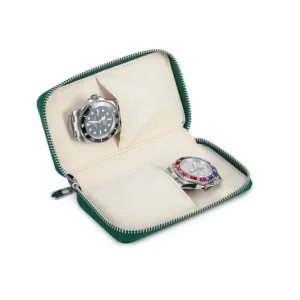Understanding Watch Collection Storage Fundamentals
For watch enthusiasts, proper storage isn’t just about keeping timepieces in one place—it’s about preserving both their value and functionality. Watch storage capacity planning involves strategically organizing your collection in a way that protects your investments while keeping them accessible and beautifully displayed.
The importance of proper storage cannot be overstated. Studies show that watches maintained in appropriate storage environments can retain up to 95% of their value compared to poorly stored timepieces, which may depreciate significantly faster. Beyond financial considerations, proper storage extends the mechanical longevity of your watches by protecting them from dust, moisture, and potential physical damage.
When approaching watch collection storage planning, it’s helpful to think in terms of collection size categories—small (1-5 watches), medium (6-15 watches), large (16-30 watches), and extensive collections (30+ pieces). Each category demands different solutions based on the types of watches you own and how you interact with your collection daily.
The spectrum of storage solutions ranges from single watch cases for travelers to elaborate display cabinets for serious collectors. Understanding this range is the first step toward creating a storage system that grows with your collection while maintaining the integrity of each precious timepiece.
Essential Factors Affecting Your Watch Storage Needs
Before selecting any storage solution, consider these crucial factors that will influence your specific requirements:
Collection Size: Assess both your current collection and realistic growth projections over the next 3-5 years. Most collectors underestimate how quickly their collections expand.
Watch Types: Mechanical watches benefit from either regular wear or watch winders to maintain their movement, while quartz watches have different storage needs. Certain materials like gold or vintage pieces may require additional protective measures.
Watch Dimensions: Standard watch slots accommodate cases between 38-42mm, but oversized watches (45mm+) or pocket watches need specialized storage solutions with larger compartments.
Display vs. Storage: Determine whether you want your collection visible for enjoyment or primarily secured for protection. This fundamental preference guides many storage decisions.
Security Requirements: Valuable collections may necessitate lockable boxes, safes, or insurance-approved storage options to protect your investment.
Environmental Controls: Watches thrive in stable environments with humidity levels between 45-60% and temperatures between 65-72°F. Extreme conditions can damage mechanisms and materials over time.
Successful organizing of watch collections depends on balancing these factors against your personal preferences and habits. Daily wearers need different access solutions than occasional collectors who rotate through their pieces less frequently.
Calculating Your Exact Storage Capacity Requirements
Determining precise storage needs requires a methodical approach:
Create an inventory: List all current watches with their case sizes, noting which ones require special accommodation due to size or features.
Apply the base capacity formula:
Current collection + Planned acquisitions (1 year) = Base capacityAdd growth buffer: Multiply your base capacity by 1.3 to account for unexpected additions (providing 30% extra capacity).
Adjust for special pieces: Add extra slots for oversized watches, which typically require 1.5-2 standard spaces each.
Consider rotation frequency: Watches worn daily might benefit from more accessible storage (top drawers, winders) versus occasionally worn pieces.
For example, a collector with 12 watches who plans to add 3 more in the coming year would calculate:
– Base capacity: 12 + 3 = 15 watches
– With growth buffer: 15 × 1.3 = 19.5 (round up to 20 slots)
– If two watches are oversized: Add 2 extra slots for a total of 22 slots
This systematic approach ensures you won’t outgrow your storage solution within months of purchase. Exploring various watch storage ideas for collectors can help translate these capacity requirements into practical solutions.
Types of Watch Storage Solutions and Their Capacities
Different storage options accommodate varying collection sizes and serve different purposes:
| Storage Type | Typical Capacity | Best For | Special Features |
|---|---|---|---|
| Watch Boxes | 2-24 watches | Small to medium collections | Display lids, drawer options |
| Watch Winders | 1-12 watches | Automatic watches | Programmable rotation settings |
| Watch Cases | 1-8 watches | Travel and transportation | Shock protection, compactness |
| Watch Rolls | 1-6 watches | Travel and minimal storage | Portability, space efficiency |
| Watch Pouches | 1 watch each | Individual protection | Soft contact surfaces |
| Watch Cabinets | 20-100+ watches | Large collections | Security features, varied compartments |
Watch boxes represent the most versatile option for collectors, offering balanced protection and display capabilities. Most quality boxes feature individual compartments with cushions that prevent watches from contacting each other, reducing the risk of scratches and damage.
Winders serve a dual purpose—storage and functionality maintenance—by keeping automatic watches running when not worn. They range from single watch units to elaborate multi-watch systems with independent rotation programs.
For collectors with varied needs, combination systems integrate different storage types, such as boxes with both standard compartments and built-in winders or display areas alongside more secure drawer storage.
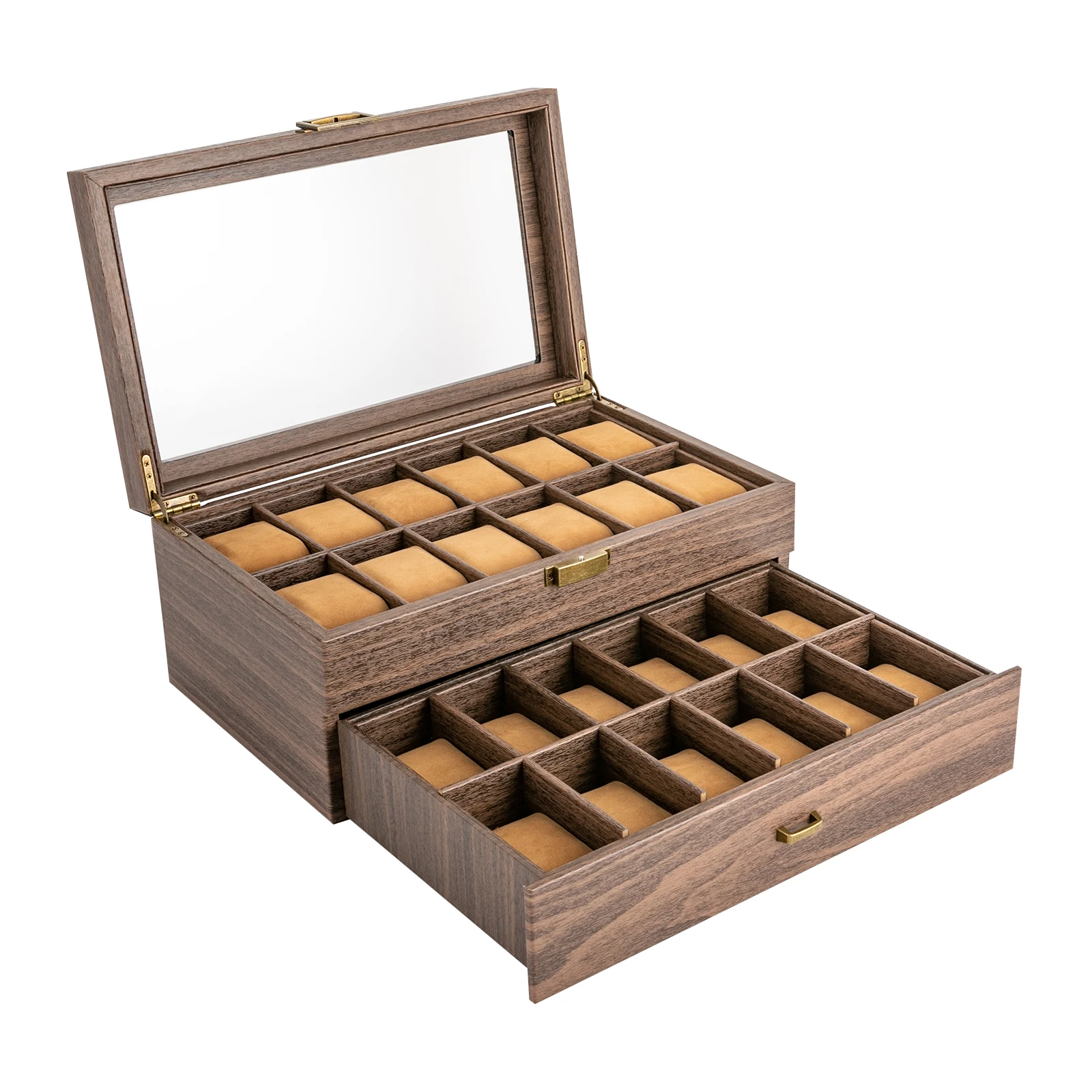
When comparing types of watch storage, consider how each solution balances protection, display, and accessibility. For those focusing on traditional watch boxes, exploring various watch box options can help identify the right fit for your collection size and style preferences.
Material Considerations for Quality Watch Storage
The materials used in watch storage solutions significantly impact both protection and longevity:
Wood Options:
– Hardwoods like walnut, cherry, and mahogany offer natural humidity regulation
– Cedar provides excellent moisture control but may require internal lining to prevent oil transfer
– Engineered woods offer cost benefits but typically provide less durability and humidity control
Leather and Synthetics:
– Genuine leather provides a luxurious aesthetic but requires conditioning
– PU leather (synthetic) offers greater moisture resistance but less breathability
– Microfiber and synthetic blends provide excellent scratch protection at lower cost
Interior Lining Materials:
– Suede creates minimal friction against watch cases and bracelets
– Microfiber offers excellent scratch protection
– Silk provides a luxurious feel but less cushioning
Glass and Display Elements:
– Tempered glass provides security while allowing visibility
– Acrylic is lighter but more prone to scratches
– UV-protective glass prevents color fading of watch faces and straps
Quality hardware elements, particularly hinges and closures, distinguish premium storage solutions from basic options. Brass hinges and magnetic closures tend to outlast their plastic counterparts significantly, maintaining alignment and security over years of use.
For collectors seeking long-term value, wooden watch boxes offer the ideal balance of natural humidity regulation, aesthetic appeal, and structural integrity. The natural variations in wood grain also create unique character in each storage piece.
Optimizing Space: Watch Storage Organization Strategies
Maximizing storage efficiency while maintaining protection requires thoughtful organization:
Vertical vs. Horizontal Layouts: Vertical storage (watches stored on their sides) accommodates more pieces in less space but may put pressure on watch crowns. Horizontal storage (watches lying flat) provides better protection but requires more surface area.
Drawer Systems: Multi-tiered drawer configurations maximize capacity in limited footprints. The best designs incorporate soft-close mechanisms to prevent watches from shifting during drawer operation.
Modular Approaches: Interlocking or stackable storage units allow your system to grow with your collection without replacing existing components. This approach proves particularly cost-effective for collectors in transition periods.
Mixed-Use Storage: Incorporating spaces for watch tools, straps, and documentation alongside your timepieces creates a comprehensive collection management system. Look for dividers that can be reconfigured as your needs change.
Space-Efficient Solutions: Wall-mounted displays, under-bed storage cases, and furniture-integrated watch cabinets offer creative solutions for collectors with space constraints.
Many collectors benefit from organizing their watches by category—perhaps grouping by brand, style (dress vs. sport), or frequency of wear. This functional categorization makes selection efficient while potentially revealing patterns in your collecting habits.
For collectors dealing with limited space, specialized watch storage solutions for small spaces offer innovative approaches to maximizing capacity without compromising protection. Various watch organizer options can accommodate collections of all sizes while maintaining accessibility and visual appeal.
Environmental Factors for Proper Watch Preservation
The environment surrounding your watches significantly impacts their longevity and performance:
Humidity Control: The ideal relative humidity range for watch storage is 45-60%. Lower humidity can cause leather straps to crack and become brittle, while higher humidity risks condensation and potential corrosion of metal components. Silica gel packets or humidity control systems within storage can help maintain optimal levels.
Temperature Stability: Watches perform best when stored between 65-72°F (18-22°C). Temperature fluctuations can cause lubricants to thicken or thin unpredictably, affecting accuracy. Avoid placing storage near heating vents, direct sunlight, or exterior walls subject to temperature variations.
Light Exposure Management: Ultraviolet light accelerates fading of watch dials and deterioration of straps. Storage solutions with UV-protective glass or solid lids help mitigate this risk, particularly for vintage pieces with delicate patina.
Air Circulation Requirements: While sealed environments protect against dust, some air circulation prevents moisture buildup. Quality storage solutions strike this balance with precision-fit lids and subtle ventilation design.
Dust Protection: Even microscopic dust particles can eventually affect movement performance if they enter the case. Proper storage should create a barrier against environmental contaminants.
For long-term storage of rarely worn pieces, incorporating desiccant packs that can be periodically refreshed provides additional protection against humidity fluctuations. Understanding these long-term watch storage protection principles helps preserve both the aesthetic and mechanical aspects of your timepieces.
Security Considerations for Valuable Watch Collections
As watch collections often represent significant financial investments, security becomes a crucial aspect of storage planning:
- Lock Types: Quality storage typically features one of several security mechanisms:
- Key locks (traditional but require key management)
- Combination locks (convenient but potentially less secure)
Biometric locks (highest security but more expensive)
Hidden Storage: Some collectors prefer storage that doesn’t advertise itself as containing valuables. Options include furniture with concealed compartments or storage that mimics everyday household items.
Safe Integration: For high-value collections, watch safes combine specialized storage features with robust security. Look for options with fire protection ratings and proper anchoring capabilities.
Insurance Considerations: Many insurers offer premium discounts for collections stored in approved security containers. Document your collection with photographs and appraisals stored separately from the watches themselves.
Digital Security: Modern options include storage with tamper alerts, movement notifications, or integration with home security systems for comprehensive protection.
The balance between security and accessibility remains personal—some collectors prioritize quick access to their daily rotation pieces while securing valuable or rarely worn watches more thoroughly. Creating a tiered security approach often provides the best compromise for luxury watch storage setup with both practical and high-value pieces.
Specialized Storage Needs for Different Watch Types
Different watch categories have unique storage requirements to maintain their condition and functionality:
Automatic Watches: Mechanical watches with self-winding mechanisms benefit from either regular wear or placement on watch winders when stored. Without motion, these watches will stop running, potentially allowing lubricants to settle. Quality winders offer programmable rotation settings (typically 650-1,950 turns per day) that can be customized to match specific watch movements.
Vintage Watches: Older timepieces often have more delicate components and may feature materials no longer in production. These watches benefit from storage with enhanced humidity control and minimal handling. Many collectors use dedicated storage with individual microfiber pouches for extra protection.
Oversized Watches: Watches exceeding 44mm often require specially designed storage with larger compartments. Standard cushions may put pressure on lugs or crowns of these larger timepieces, potentially causing damage over time.
Dive Watches: Though built for water resistance, dive watches benefit from storage that helps manage moisture between wearings. Silica gel packets can be particularly helpful for these robust tool watches.
Dress Watches: Typically thinner and more elegant, dress watches are particularly susceptible to scratches. Storage with ultrasoft lining materials provides extra protection for polished surfaces and exhibition casebacks.
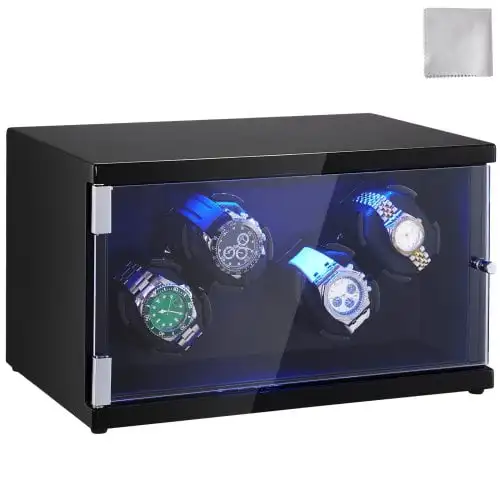
For collectors of automatic watches, exploring specialized watch winders ensures your mechanical timepieces remain ready to wear while being properly maintained during storage periods.
Creating a Long-Term Watch Storage Growth Plan
Strategic planning for collection evolution helps avoid repeated storage upgrades:
Assess Collection Evolution Patterns: Review your acquisition history. Do you tend to add watches seasonally, annually, or sporadically? Identifying patterns helps predict future growth.
Adopt Modular Systems: Invest in storage solutions that can expand through additional compatible units rather than requiring complete replacement as your collection grows.
Plan for Milestone Acquisitions: If you’re saving for specific high-value pieces, ensure your storage strategy accounts for these planned additions, which may have special requirements.
Budget for Storage Upgrades: Consider allocating 5-10% of your watch acquisition budget toward storage improvements. Quality storage represents an investment in preserving the value of your collection.
Integration Strategy: When adding new storage, consider how it will work with your existing solutions. Consistency in design and functionality creates a cohesive collection experience.
Documentation Systems: As collections grow, tracking becomes increasingly important. Digital inventories with photos, purchase information, and service records complement physical storage solutions.
Many growing collections benefit from compact watch storage solutions that maximize capacity while maintaining the protection and organization necessary for proper watch care. The most successful collectors treat their storage systems as evolving projects that mature alongside their timepiece acquisitions.
Luxury Watch Boxes, Men's Watch Boxes, Single Watch Box
Price range: $903.35 through $980.97 Select options This product has multiple variants. The options may be chosen on the product pageSingle Watch Travel Case, Watch and Jewelry Box, Watch Roll Travel Case
Price range: $93.44 through $140.65 Select options This product has multiple variants. The options may be chosen on the product pageMen's Watch Organizer, Watch Display Case, Watch Organizer
Price range: $112.68 through $169.45 Select options This product has multiple variants. The options may be chosen on the product pageAutomatic Watch Winder, Luxury Watch Winder, Single Watch Box
$307.39 Select options This product has multiple variants. The options may be chosen on the product pageLuxury Watch Boxes, Luxury Watch Travel Case
Price range: $200.33 through $224.57 Select options This product has multiple variants. The options may be chosen on the product pageLeather Watch Travel Case, Men's Watch Travel Case, Watch Roll Travel Case
Price range: $91.37 through $92.63 Select options This product has multiple variants. The options may be chosen on the product page
How to Assess Watch Storage Quality and Construction
Evaluating storage quality before purchase helps ensure long-term satisfaction:
Joinery and Construction: Quality watch storage typically features dovetail or finger joints rather than simple butt joints. These construction methods provide greater structural integrity and longevity.
Interior Lining: Examine the attachment of interior materials—properly secured linings without visible adhesive or uneven application indicate attention to detail. Gently run your hand along surfaces to check for any rough spots that could potentially scratch watches.
Hinge Quality: Open and close the lid multiple times, checking for smooth operation and proper alignment. Quality hinges maintain their positioning without sagging even after years of use.
Weight and Stability: Substantial weight often indicates quality materials, while stability on various surfaces prevents accidental tipping that could damage watches.
Finish Consistency: Inspect exterior finishes under good lighting, looking for consistent application, particularly at edges and corners where quality control issues typically appear first.
Cushion Design: Quality watch cushions should be firm enough to secure watches in place but soft enough to prevent bracelet stretching. Removable cushions offer additional versatility for accommodating different watch types.
For collectors seeking the finest protection for their timepieces, luxury watch boxes combine superior construction techniques with premium materials designed specifically for fine timepiece preservation.
The Balance Between Display and Protection
Finding equilibrium between showcasing and safeguarding your collection involves several considerations:
Glass-top display cases offer excellent visibility while providing physical protection, though they do expose watches to light. Some collectors rotate which pieces they display to minimize UV exposure for any single watch. Quality display cases feature UV-resistant glass that filters harmful rays while maintaining visibility.
Open display stands create dramatic presentations but leave watches exposed to environmental factors. These options work best for watches in regular rotation or in controlled environments away from direct sunlight and high traffic areas.
Concealed storage provides maximum protection at the expense of enjoyment and accessibility. This approach suits valuable pieces worn only occasionally or collections in less secure locations.
Many collectors implement rotating display strategies, bringing different watches into visible storage based on seasonal wear patterns or special occasions. This approach satisfies both the desire to enjoy viewing the collection and the need for long-term protection.
Lighting integration enhances the display aspect significantly. LED lighting creates minimal heat and UV exposure while dramatically improving visibility. The best display cases incorporate subtle lighting that activates when the case is opened.

For collectors seeking to showcase their timepieces while maintaining protection, specialized watch display cases offer thoughtfully designed solutions that balance these competing priorities.
Common Watch Storage Planning Mistakes to Avoid
Learning from these frequent errors can help protect your valuable timepieces:
Underestimating Collection Growth: The most common mistake is selecting storage with insufficient capacity for future acquisitions. Collections typically grow faster than anticipated.
Prioritizing Aesthetics Over Protection: Choosing storage based solely on appearance rather than protective qualities may result in watches exposed to harmful environmental factors.
Overlooking Environmental Controls: Failing to account for humidity and temperature fluctuations can lead to condensation, corrosion, and material degradation over time.
Inadequate Separation: Watches stored touching each other inevitably develop scratches and wear marks. Proper individual compartments prevent this common form of damage.
Incorrect Winder Settings: Using improper rotation settings on watch winders can potentially overwound or inadequately wind automatic movements, affecting their longevity and accuracy.
Using Poor Quality Materials: Acidic woods, untreated leathers, or certain synthetic materials can transfer compounds to watch surfaces, causing long-term damage that may not be immediately apparent.
Creating Access Barriers: Storage that makes watches difficult to retrieve often leads to particular pieces being ignored or neglected. The best storage solutions make regular rotation frictionless.
For collectors seeking solutions that combine protection with visual appeal, elegant watch storage solutions offer thoughtfully designed options that avoid these common pitfalls while enhancing the collecting experience.
Portable Solutions for Travel and Mobility
Protecting watches while traveling requires specialized solutions:
Travel Watch Rolls offer a balance of protection and portability, typically accommodating 2-6 watches. Quality rolls feature individual pockets with snap or button closures that prevent watches from contacting each other during transport. The cylindrical design efficiently uses space in luggage while protecting against compression.
Multi-Watch Travel Cases provide more robust protection through rigid exterior shells with foam-padded interiors. These cases typically hold 2-8 watches and offer superior protection against impacts at the expense of larger size and weight.
Single Watch Pouches represent the most minimal option, ideal for business travelers carrying just one alternative timepiece. Look for designs with microfiber interiors and reinforced corners.
Security features worth considering include RFID blocking materials (for watches with smart features), locking zippers, and inconspicuous exterior designs that don’t advertise valuable contents.
For international travel, particularly through airports, selecting cases that allow easy inspection without excessive handling helps protect your timepieces during security screenings.
The best travel solutions integrate with home storage systems, either through compatible dimensions that fit within larger cases or through modular components that serve double duty at home and while traveling. Understanding the differences between watch boxes vs. watch rolls helps travelers select the right option based on their specific journey requirements.
For frequent travelers, Daily Accents offers specialized watch travel cases designed to maintain the same level of protection on the road that collectors expect at home.
Designing a Custom Watch Storage System
For collectors with specific needs not met by standard options, custom storage provides tailored solutions:
Requirement Analysis: Begin by documenting non-negotiable features based on your collection composition, growth plans, and space constraints. Consider both current needs and anticipated changes over a 5-10 year horizon.
Material Selection: Custom solutions allow precise material choices based on your environment and preferences. Consult with craftspeople about locally available hardwoods, specialized humidity-controlling materials, or sustainable options if these align with your values.
Interior Configuration: Custom designs can accommodate unusual watch sizes, integrated watch winders, or specific organizational schemes based on your collection categorization preferences. Consider creating zones for different watch types or wearing frequencies.
Furniture Integration: Built-in watch storage can be seamlessly incorporated into existing cabinetry, closets, or dedicated watch collection rooms. This approach maximizes space efficiency while creating a cohesive aesthetic.
Cost Considerations: Custom solutions typically start at 3-5 times the price of premium retail options but offer perfect alignment with specific needs. For collections exceeding 30-50 watches, the investment often proves worthwhile through superior protection and organization.
When planning custom storage, bring examples of elements you appreciate from existing solutions to help craftspeople understand your vision. Detailed measurements of your watches, particularly any unusual pieces, ensure proper fit and function in the final product.
With careful planning and quality execution, a custom storage system evolves from simply housing watches to becoming part of the collection itself—an heirloom-quality solution that enhances the enjoyment of fine timepieces for years to come.

